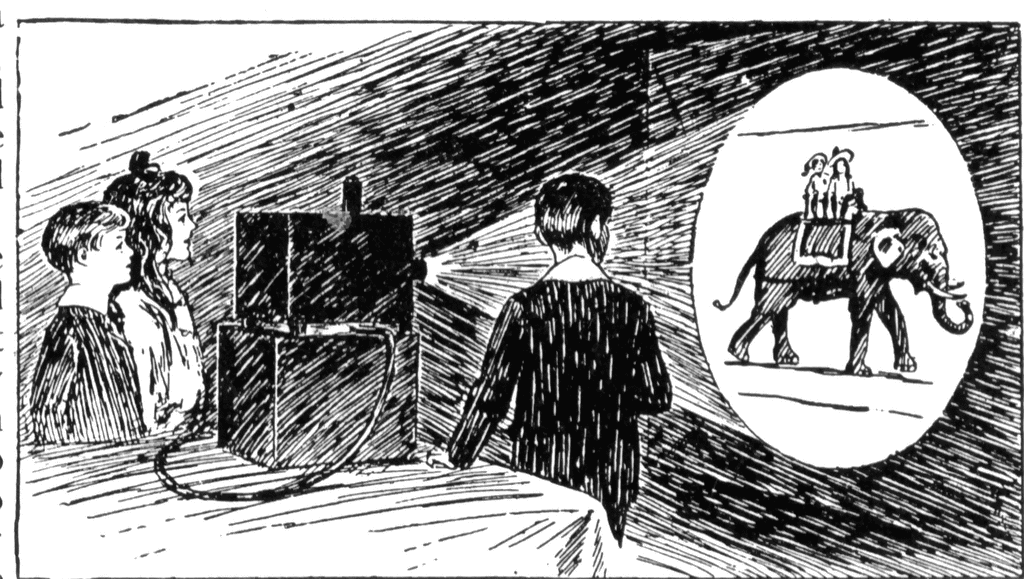The tepee is an iconic symbol of Native Americans who lived on the Great Plains in the U.S. and Canada.
Their cone shape is immediately recognizable as the home of choice for many of these nomadic peoples. Tepees were warm and secure, but they could also be dismantled and packed up when it was time to move.
But what many people may not realize is that most tepees were more than just functional. They were also beautiful.
Yale's Beinecke Rare Book & Manuscript Library shows us these amazing pieces of portable architecture in full, living color thanks to a series of glass lantern slides created by photographer Walter McClintock and colored by Charlotte M. Pinkerton.
The glass slides would have been mounted into a "magic lantern," which would project them onto a screen or wall for people to see, much like a modern slide projector.
Thanks to the color, the beauty of the tepees and their bright, personalized designs can be fully appreciated now.
Black and white photography is great, but history really comes to life in color and makes the people in the photos seem like people you could know, even if the photos were taken a hundred years ago!
Take a look at some of the amazing tepee art created by a Blackfoot community in northwestern Montana in the 1890s. They're really amazing!
[H/T: MessyNessyChic]

These hand-colored slides, which were meant to be viewed via projector, were taken by photographer Walter McClintock.
McClintock headed west in 1896 as a photographer for the government, investigating national parks and forests.

Along the way, he befriended a Blackfoot scout named Siksikakoan, also known as William Jackson.
When he was done with his government job, McClintock went with Jackson to Montana, where he was introduced to the Blackfoot community.
He would spend the next 20 years photographing them and their homeland.

His photographs would become slides, which were projected through a "magic lantern."

Much like modern day projectors, the full-sized photos would be displayed on a nearby wall, bringing to life gorgeous photographs of distant lands and foreign cultures.

McClintock took over a thousand photos, documenting the Blackfoot culture and way of life.
And one of his favorite subjects were their tepees, which were brightly decorated with all kinds of images and designs.

Tepees are created by stretching animal skin, usually buffalo, over wooden poles. They're designs with a special flap at the top that lets smoke out while also keeping out rain.

And while they're relatively light, they're very wind resistant, which is a must out on the plains!

Most tepees in an average village would be plain.
But some, like the ones seen here, were decorated with images of animals, celestial bodies like planets and stars, or narrative images that might tell the story of a battle.

Sometimes, a tepee owner would decorate their tepee to tell of a personal experience. It might show a successful hunt, or even a dream.

When painting a dream, the person would tell their dream to the shamans, who would then work with the community's artists to create a suitable design.

Today, tepees are still used by Native Americans of various backgrounds, but mainly for ceremonial purposes.

Various different tribes each has their own designs and methods of decoration. McClintock's photos are all tipis of Blackfoot origin.

McClintock was aware of the western expansion of the U.S., and the displacement and forced assimilation of Native Americans.
Afraid that their culture might be lost forever, he wanted to capture as much as he could on camera.

McClintock worked with Blackfoot elder Mad Wolf to learn about the tribe and their traditions. He would go on to write books and give lectures on the culture.

McClintock didn't just photograph tepees, though. He also captured images of Blackfoot ceremonies and everyday life, as well as portraits of tribal members.

By doing so, he hoped to preserve their culture, as well as educate others on it.

You can see all 1,413 of McClintock's slides (yes, there really are that many!) on Yale's library website, and sneak a peek into the past in full, vibrant color.
Please SHARE if you think it's important to preserve Native American history and culture!




